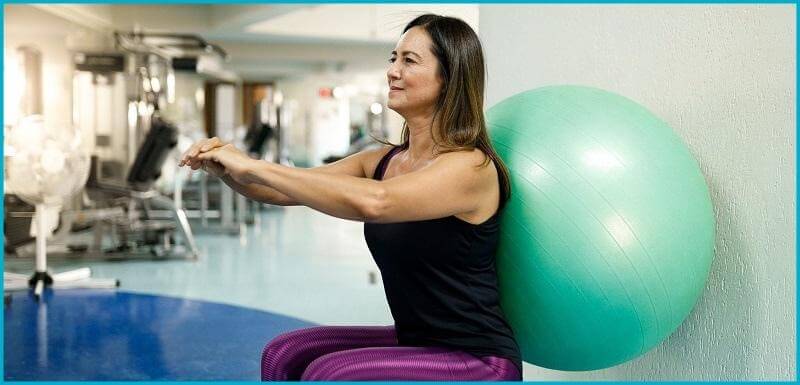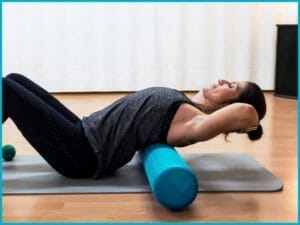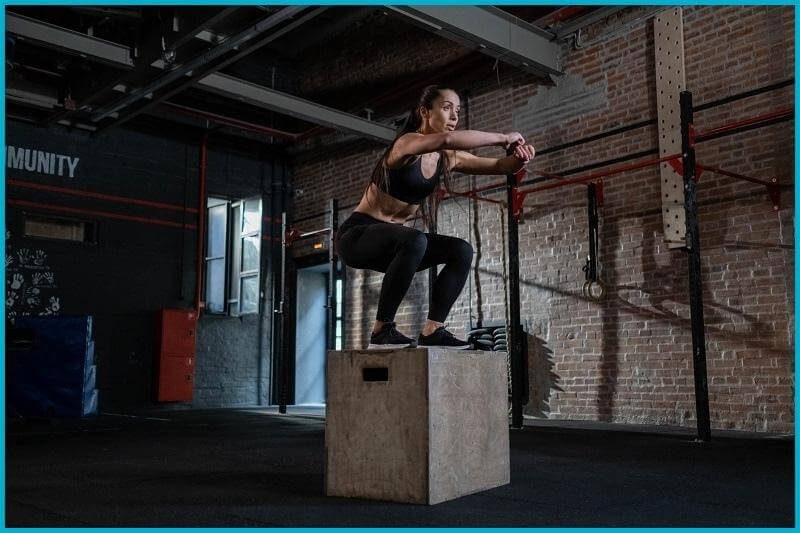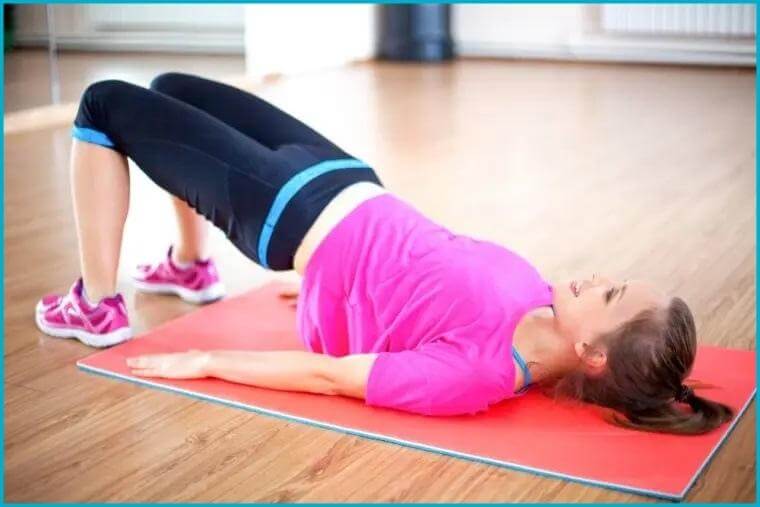After suffering an injury, your physical therapist will often recommend at-home physical therapy exercises to help you recover faster. When done regularly and correctly, these exercises will help you decrease pain, regain strength, improve your function, and improve overall health and wellness.
But not all exercises are created equal. For the absolute best value for your time and energy investment into your recovery, we’ve found that an exercise that achieves multiple goals at once has the potential to make the biggest impact and change
Here are some of our favorite home physical therapy exercises to get you started!
What Is Physical Therapy And What Are Its Benefits?
Physical therapy is a non-invasive medical treatment that helps individuals develop, maintain, and restore maximum body movement and physical function. A physical therapy program can help a patient recover from an injury, relieve pain, or deal with an acute or a chronic condition.
Through fitness and wellness-focused programs, physical therapy exercises can prevent the loss of mobility before it happens, leading to a healthier, more active lifestyle.
Some great benefits you’ll get from physical therapy include:
- Safe return to your sport or activity
- Pain relief
- Reduced need for opioids
- Restoring mobility
- Regaining function
- Improved gait
- Better posture
- Strength gains
- Avoiding surgery
- Enhanced balance
- Addressing age-related medical issues
How Can Physical Therapy Help You Recover From An Injury?
Whether you hurt yourself in a fall or while playing sports, injuries are an unfortunate part of life, and without a doubt, they challenge us both mentally and physically. In the case of sports-related injuries, a sports rehab program can help an athlete manage pain, rebuild their strength, prevent permanent damage, and most importantly, help them get back to the field/court/track faster.
Your physical therapists can tailor their interventions to your specific needs, focusing on areas of weakness to reduce stress and enhance your body’s capacity to recover. There are many different ways a physical therapist can help speed recovery such as manual techniques, mobilizations, massage, or other modalities like laser therapy or electrotherapeutic devices.
To get the most of your recovery, a well designed plan will maximize your time by utilizing the therapist’s skills and modalities for in office sessions. While exercises are often a critical component to rehabilitating an injury, you can be more efficient by doing some key exercises at home. This way, you will reduce the stress that comes from having to commit to in office physical therapy for 3 days a week or more.
The choice is up to you, you can enhance your own progress by taking the opportunity to do some work on your own at home.
In case that sounds good to you, we’ll teach you some of our favorite, most comprehensive exercises in the next section, and you can do these physical therapy exercises in your very own home.
The Top 7 Exercises For Recovering From An Injury
If you live in the Main Line Philadelphia area, you can simply book an appointment with our Ardmore physical therapy office to help you with physical therapy at-home exercises. All you need is a conducive space for exercise, mats, bands, and other small exercise equipment.
Speed up your recovery and get your life back with these top 7 home physical therapy exercises.
1. Squats with Overhead Band
The following exercise combines working your legs through a squat, with working your arms and back muscles (or your “posterior chain”). When we train a squat in this way, we create get multiple ways to address common areas of weakness and help you get stronger faster, but also do it in a way that addresses many things at once – saving you time.
How To Do It Correctly
Squats with Overhead Band
Position yourself in front of a band at eye level. Pull the band with straight arms, palms facing forward, into a “Y” position. Hold the band tension while descending into a squat. Try to avoid leaning to produce the tension on the band here, vs. activating your posterior chain through your shoulder pull.
2. Prone Ball Cars
 Source: Verv
Source: Verv
One of the biggest deficits we see in patients across the board is weakness in the back side of the body, namely, the spinal erectors, back muscles, and gluteal muscles. A great way to work on these muscles in a functional way is through the shoulders, as shown above.
How To Do It Correctly
Prone Ball Cars
From a prone position, pass an object (small ball or small light object) from hand to hand overhead and then behind your back. When you pass it overhead, your eyes should be looking at it. When you pass it behind your low back, bring your head to neutral. Do CW then CCW for this move.
3. Figure 8s in a squat
 Source: fitfarms
Source: fitfarms
Squats are a great muscle to target for improving overall muscle tone and strength, and are also a critical muscle group for things like walking, running, and stairs. Incorporating dynamic activities while in the squat will build the endurance muscles in the quadriceps while at the same time challenging dynamic stability needed for responding to external forces and balance challenges in life.
How To Do It Correctly
Figure 8s in a squat
From a wide stance squat, weave a moderate to heavy kettlebell or dumbbell through the legs. Weave the KB/DB from inside one leg, around, and then inside the other leg to complete the move. Try this clockwise and counterclockwise.
4. Inchworms

Inchworms are a great way to build core stability and strength, while strengthening shoulders and stretching your hips all at once.
How To Do It Correctly
Inchworms
From a plank position, walk your feet up to your hands, and then your hands out to plank once again. Keep your knees straight and your hands completely flat throughout the move.
5. Plyometrics
 Source: Pexels
Source: Pexels
Plyometrics are a type of exercise that build muscle power by doing different movements quickly and with a lot of force. Plyometrics are very important because they train our fast twitch muscle fibers, which after injury (and as we age) begin to diminish if not purposefully targeted.
We recommend starting with these Pause Air Jump Squats (if you feel comfortable with them).
How To Do It Correctly
Pause Air Jump Squats
Start in a Squat, then explode upward, driving your arms down and back. As you land, allow your hands to come forward again before repeating the motion.
6. Goblet Squat High Holds
 Source: Incontinence
Source: Incontinence
The Goblet squat is another great way to engage the core and legs all at once. By shifting your arms upward and holding a weight at eye level, you now also engage more of your abdominal muscles and back muscles in a way that will build great strength and resilience.
How To Do It Correctly
Start in a goblet squat.
Maintaining your squat position, lift the KB/DB up to the level of your forehead, keeping elbows squeezed in and chest upright. Hold this and breathe.
7. Warrior One with a Twist
 Source: Get Healthyu
Source: Get Healthyu
Warrior One position will help you strengthen your legs, and build your core. When you add a twist to it, you will also now target your oblique muscles and back muscles as well, AND you will build mobility and stability all at once.
How To Do It Correctly
Warrior 1 w a twist
Start in a lunge, with your back knee straight, back heel hovered (warrior 1). Aim to have the front knee near 90 degrees, and be sure to have the heel on the front foot flat. Slowly bring your arms into a “prayer” position, and rotate toward the front leg. Drive your elbow into your knee, and push your knee into your elbow to create a twist in your upper trunk. Breathe and expand your rib cage to deepen the twist.
Final Thoughts
Home exercises are designed to be practical, accessible, and feasible so that patients can maximize their efforts without instruction. These exercises allow you to potentially keep working on your recovery even when you are not in the physical therapy office.
It is highly recommended that you review this list with your physical therapist before attempting them. This way your therapist can ensure these particular exercises are the best to address your specific deficits and injury, and he/she/they can check your ability to perform these exercises correctly.
If you found this article helpful, please share it!